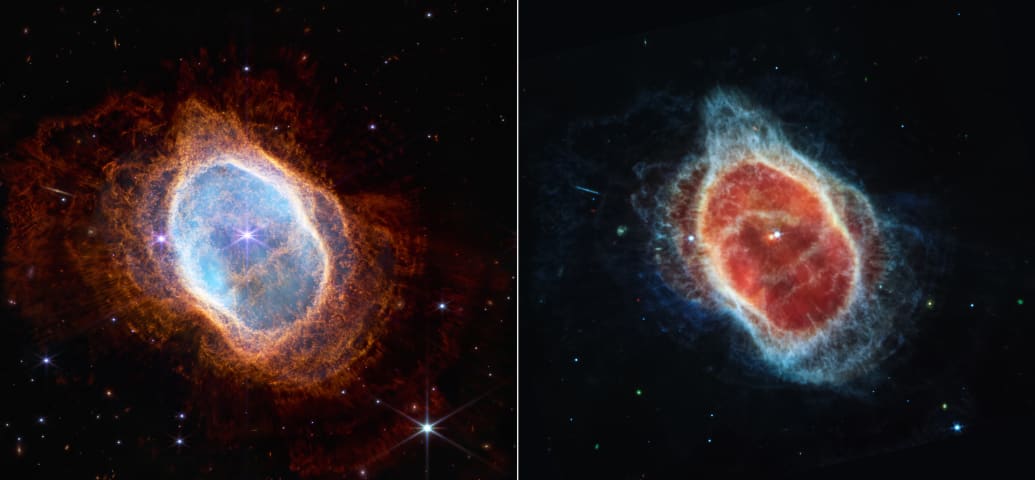On Monday, President Joe Biden had the once-in-a-lifetime opportunity to unveil the first full-color image delivered by the James Webb Space Telescope: a bright, colorful deep field snapshot of space in the direction of SMACS 0723, a region of the night sky containing a galaxy cluster so massive that it ends up bending light around it. The result is a magnification of stellar objects in the background—distant stars and galaxies of all shapes and sizes, glimmering with brilliance.
Finally, less than a day later, we have the complete set of the first full-color science images, brought to us by the world’s most powerful space observatory.
“It’s an example of what NASA can achieve,” NASA administrator Bill Nelson told reporters Tuesday morning. “It’s one of these great engineering feats—not just for us, but for humanity.”
Feast your eyes on the true power of the JWST below:

NASA, ESA, CSA, and STScI
WASP-96 b: This isn’t a photo per se—it’s the measurement of water content in the atmosphere of a giant exoplanet located 1,150 light-years from Earth, outside the solar system. This gaseous giant has half the mass of Jupiter but orbits its host star every 3.4 days—making it an extremely hot world. It has a gorgeous sheen to it thanks to the high sodium content in its atmosphere, which also renders it cloud-free.

NASA, ESA, CSA, and STScI
Southern Ring Nebula: Also known as the “Eight-Burst” nebula, it's home to a dying star that’s hemorrhaging gas into a cloud stretching nearly a light-year in diameter. The Southern Ring Nebula is 2,000 light-years from Earth. Pictured above is a side-by-side view of the nebula as pictured using two different cameras on Webb: the Near-Infrared Camera (NIRCam) on the left, and the Mid-Infrared Instrument (MIRI) on the right.

NASA, ESA, CSA, and STScI
Stephan’s Quintet: A compact group of five galaxies that are gravitationally bound to each other, 290 million light-years away from us. Four of the five galaxies here repeatedly encircle each other in a dance of close encounters. This is Webb’s largest image to date.

NASA, ESA, CSA, and STScI
Carina Nebula: An ornate and complex region of interstellar clouds approximately 8,500 light-years away. As with other nebulae, Carina is a stellar nursery—home to infant stars (plus middle-aged ones) and masses of supercharged gas on their way to becoming stars. This is one of the biggest and brightest nebulae known to astronomers. You can see jets of gas and dust bursting in every direction, along with shrouded galaxies lurking around in some nooks and crannies between the dust.
Launched on Christmas Day 2021, the JWST, sitting one millions miles away in orbit around Earth and boasting the biggest mirrors ever used for a space observatory, specializes in looking at the universe through infrared and near-infrared light. Because light becomes stretched out as it travels longer distances, this makes JWST especially useful for piercing through cosmic dust clouds and looking at some of the farthest objects in the known universe—some as far as 13.7 billion light-years away.
That means we’re effectively using the telescope to look back 13.7 billion years ago—at the infancy of the universe. Scientists hope to use JWST to understand what the universe looked like in the immediate aftermath of the Big Bang.
The mighty telescopes will also be a key instrument in other astronomical investigations—including how stars and black holes form, and the search for planets that may be habitable to life. It has fuel for at least 20 years—which means we’ll have two decades of a steady stream of state-of-the-art eye candy.
“It’s not going to stop,” said Nelson. “Every image is a new discovery.”

